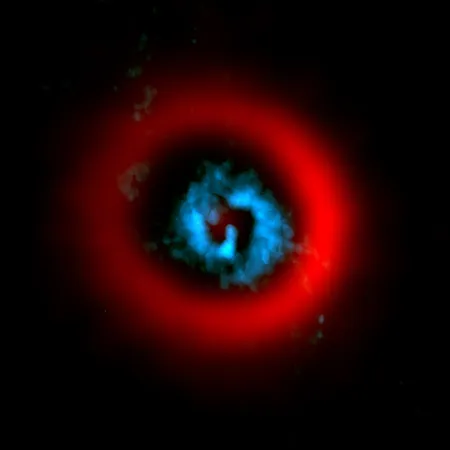
France Shatters Records with Impressive 22-Minute Fusion Reaction!
2025-09-15
Author: John Tan
A New Era in Fusion Energy
In a groundbreaking achievement, France's WEST tokamak has set a stunning new world record by sustaining a hot plasma for an astonishing 1,337 seconds—over 22 minutes! This milestone is crucial for the future of nuclear fusion power, showcasing the ability to maintain long-duration plasma operations.
Beating the Competition
This impressive performance eclipses the previous record held by China's EAST, improving the duration by approximately 25%. Researchers demonstrated that the WEST tokamak can endure intense operating conditions without any degradation of its internal surfaces.
Anne-Isabelle Etienvre, Director of Fundamental Research at the CEA (Commissariat à l'énergie atomique et aux énergies alternatives), highlighted the significance of this achievement, stating that maintaining hydrogen plasma for over twenty minutes involved injecting 2 MW of heating power.
Inside the Fusion Process
At the heart of the WEST reactor, scientists harness strong magnetic fields to contain a superheated gas of charged particles. This confinement is essential for heating the plasma to temperatures where atomic nuclei can fuse and release energy.
Understanding Tokamaks
A tokamak operates like a magnetic bottle, guiding charged particles in a swirling motion to prevent them from colliding with the walls. This magnetic confinement enables scientists to heat a thin gas until fusion can occur, potentially revolutionizing energy production.
What's Next for Fusion Technology?
The next step for France involves the larger ITER project, currently under construction nearby. ITER aims to generate approximately 500 megawatts of fusion power using around 50 megawatts of heating power—an ambitious leap for fusion technology.
Differentiating Records in Fusion Research
While WEST has excelled in sustaining plasma duration, energy output remains another critical aspect of fusion research. For instance, the UK's JET facility recently achieved a remarkable 69 megajoules of fusion energy in just a five-second pulse. Each facility emphasizes different parameters, together providing insights into the requirements for future reactors.
Why Stability Matters
Long-duration plasma operation is essential for future power plants. They must maintain steady temperatures, utilize clean fuel, and ensure components withstand the harsh environment without contamination. Effective exhaust handling is also crucial, allowing controlled release of heat and particles to protect internal surfaces.
Material Durability is Key
Materials used in reactors, like tungsten, play a significant role in the performance of fusion devices. While tungsten tolerates extreme heat, careful operation is vital to prevent damage.
Beyond the Laboratory
It's important to note that while a 22-minute plasma runtime is a remarkable achievement, it does not equate to net electricity production. The WEST facility is designed for research, focusing on stability rather than achieving more energy output than it consumes.
Future of Fusion Energy
The CEA team aims for extended campaigns to log hours of plasma time while gradually increasing output. Each test contributes to a framework for safe, repeatable operations that will benefit future large-scale projects like ITER.
Unlike traditional fission reactors, fusion reactions do not create long-lived radioactive waste, though care must be taken with materials that may become activated. This aspect underscores the importance of component durability and meticulous management of fuel and exhaust.
The progress seen at WEST signifies a vital step toward practical fusion energy—each record not only extends the limits of plasma but also lays the groundwork for reactors capable of delivering vast amounts of safe, reliable power.



 Brasil (PT)
Brasil (PT)
 Canada (EN)
Canada (EN)
 Chile (ES)
Chile (ES)
 Česko (CS)
Česko (CS)
 대한민국 (KO)
대한민국 (KO)
 España (ES)
España (ES)
 France (FR)
France (FR)
 Hong Kong (EN)
Hong Kong (EN)
 Italia (IT)
Italia (IT)
 日本 (JA)
日本 (JA)
 Magyarország (HU)
Magyarország (HU)
 Norge (NO)
Norge (NO)
 Polska (PL)
Polska (PL)
 Schweiz (DE)
Schweiz (DE)
 Singapore (EN)
Singapore (EN)
 Sverige (SV)
Sverige (SV)
 Suomi (FI)
Suomi (FI)
 Türkiye (TR)
Türkiye (TR)
 الإمارات العربية المتحدة (AR)
الإمارات العربية المتحدة (AR)